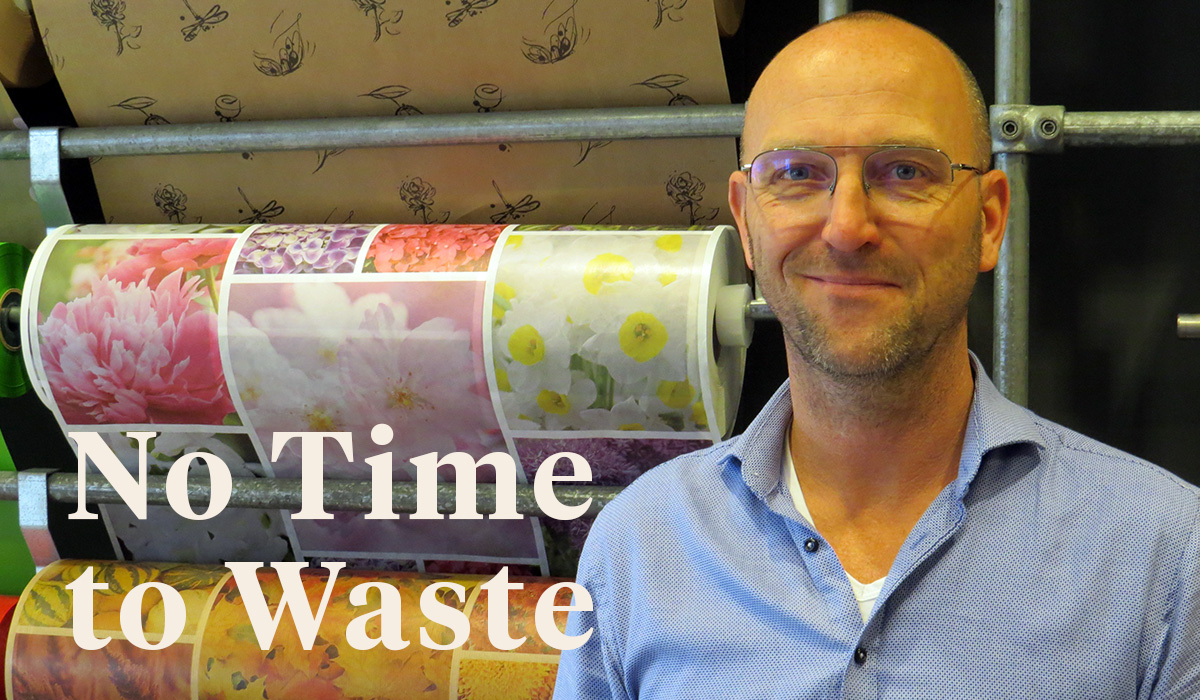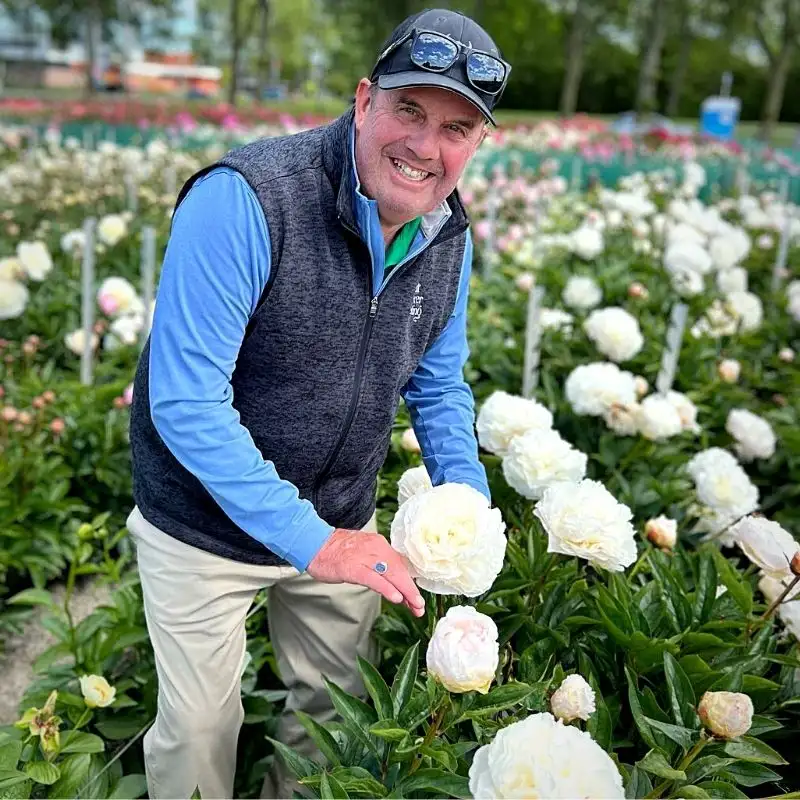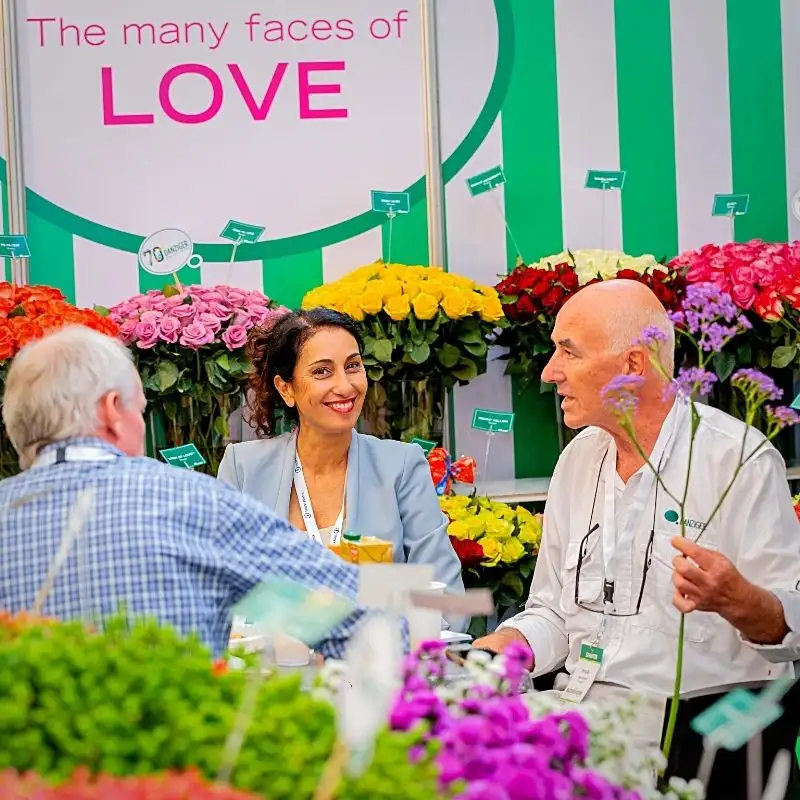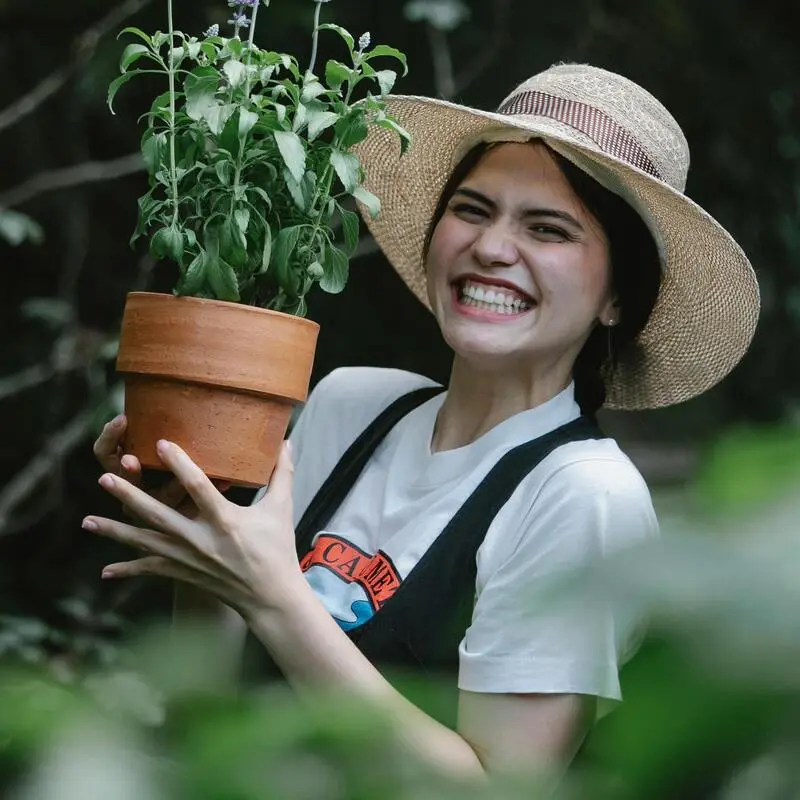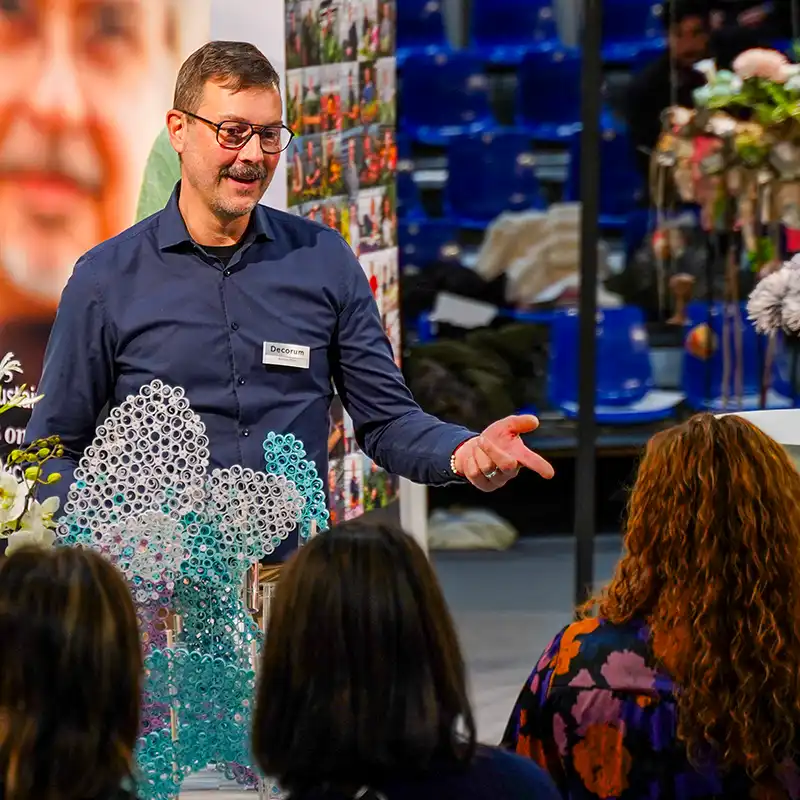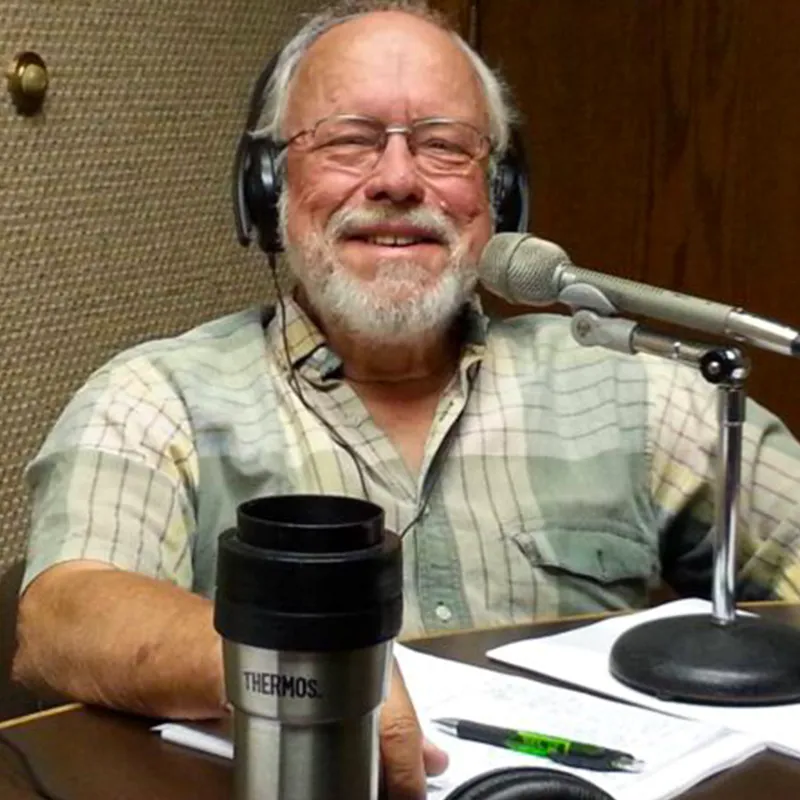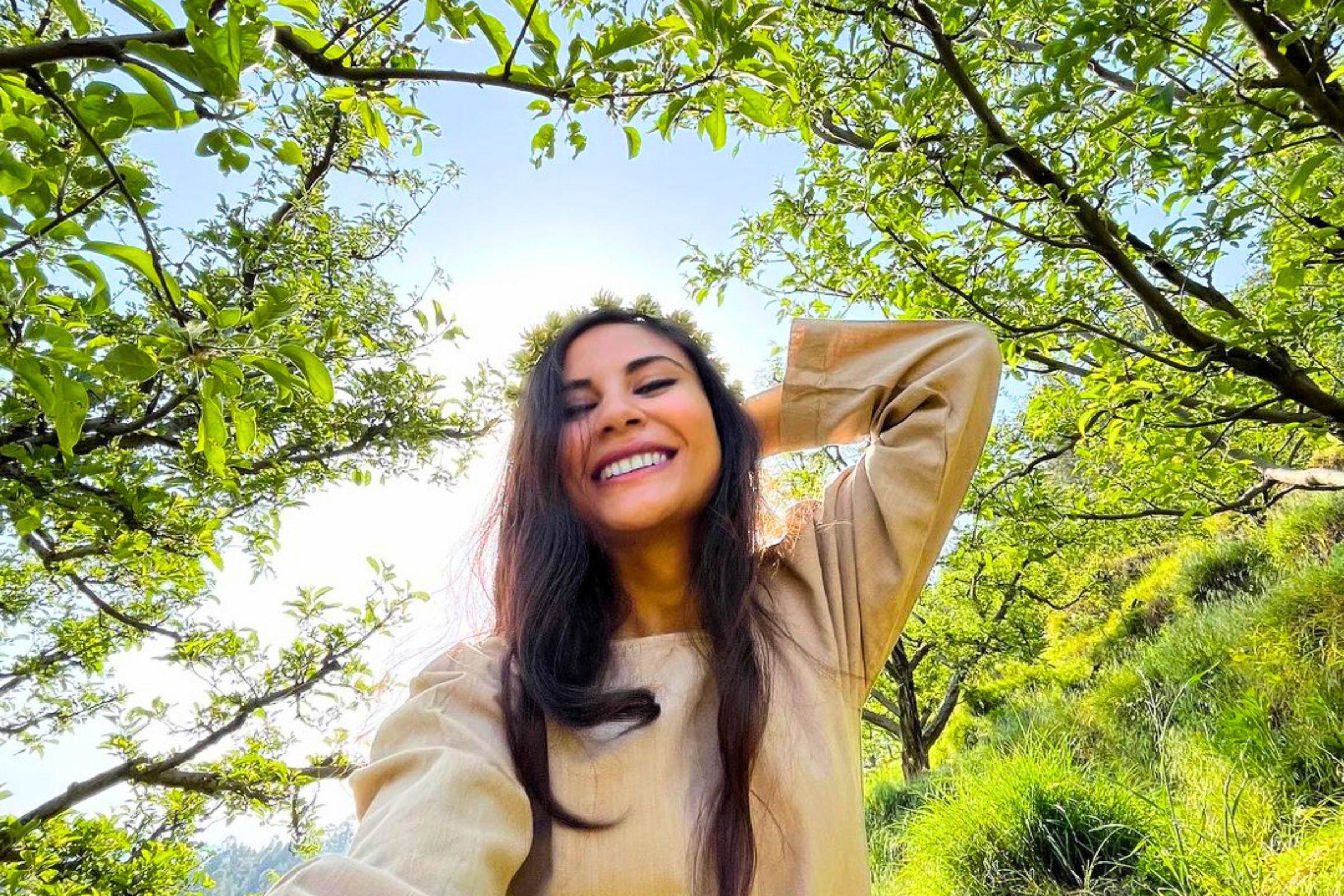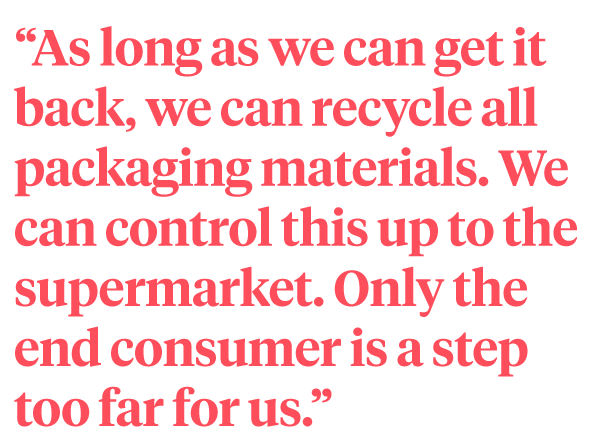
Demand-driven
Sustainability does not go back a long way for Broekhof. All the sustainable products these days started as a demand-driven initiative. It was only two years ago that they received the first signals from the market that there was a need for environmentally friendly solutions. It was a wake-up call for everyone in the floral industry that the use of plastic and cardboard materials must not only be reduced. A reduction was just part of solving the waste problem. The next step would be to also re-use and recycle materials.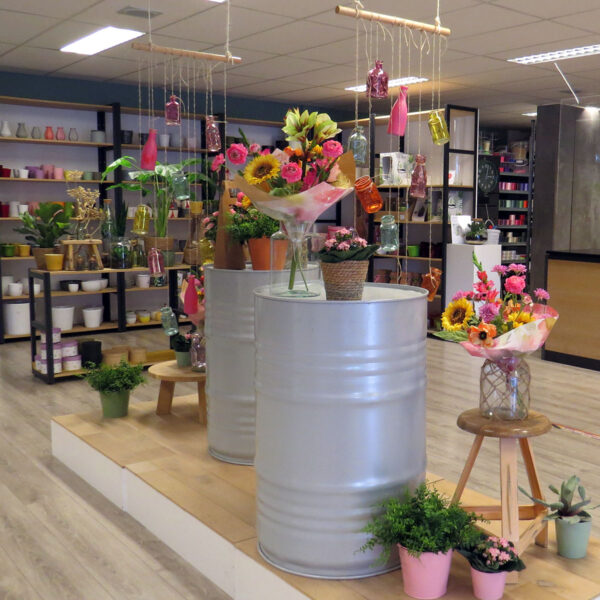
The Broekhof Aalsmeer showroom
No Simple Choices
Broekhof wasted no time and put full effort into developing a range of products that meet this new kind of demand. The idea behind this is that in theory all products, both paper, and plastic, are recyclable. It all depends on just a few things to know and making the right choices. Making sustainable choices may seem simple, but in practice, this is not always so. Here is where science plays a big role. Broekhof discovered this when their products were analyzed in the laboratory of The LCA Centre, an independent packaging life cycle assessment agency that scientifically examines the environmental impact of packaging. With the help of The LCA Centre, Broekhof gets the necessary data about its products' levels of sustainability.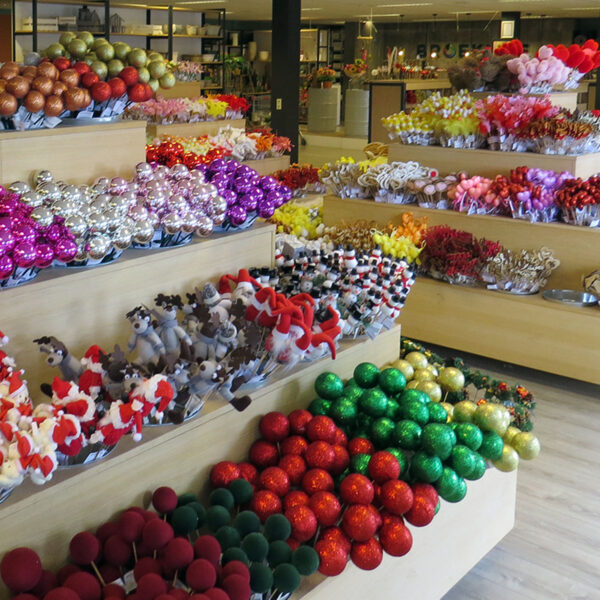
The Broekhof Aalsmeer showroom
Green Leaf and Blue Leaf
The packaging and decorations in the Broekhof Green Leaf series are made from renewable and natural materials that, after use, are biodegradable, 100% industrially compostable, or compostable at home (and can, therefore, be deposited in the biodegradable refuse bin). These include products made from PLA, PaperWise, elephant grass, wood, jute, sisal, raffia, bamboo, agricultural residual material, and other natural (bio-based) materials. You can recognize them by the FSC logo which guarantees that a wood or paper product originates from a responsibly managed woodland, the Vinçotte logo 'OK Compost HOME' for home composting, and the Seedling logo for industrially compostable products. The Broekhof Blue Leaf series are packaging and decorations made from recyclable materials or FSC certified raw materials that are recyclable after use. For example, products made from FSC certified (Kraft) paper or (corrugated) cardboard and recyclable plastics. These products can be recognized by the FSC logo which guarantees that a wood or paper product originates from a responsibly managed woodland, the Recycled logo for products made from recycled material, and by one of the Recyclable logos for fully recyclable material. Joost Huijsmans explains why the focus nowadays turns more to Blue Leaf - recycling - than to Green Leaf - biodegradable:"Two years ago we started with both series, however the norms for compostable packaging (PLA, etc.) have been up for discussion for a while already and therefore we move more and more towards circular packaging materials. We can control this up to the florists and supermarkets because they can collect this in their stores. We have agreements with the waste-recycling industry to recycle the Blue Leaf waste. We are in the midst of designing a process to get all this waste back to us and we are advising participants in the horticultural chain how we can recycle. Examples are the black plastic flower buckets that we are getting back from all over Europe and the big plastic collector bags called 'CircularBag'. Only the end consumer is a step too far for us. Every country and, in the Netherlands, every city and community has its own regulations on collecting waste. This makes it impossible to control for us. We would love to see better post-consumer regulations here to control also this part of the waste chain. So, unfortunately, most of our sleeves are still not collected for return to us."
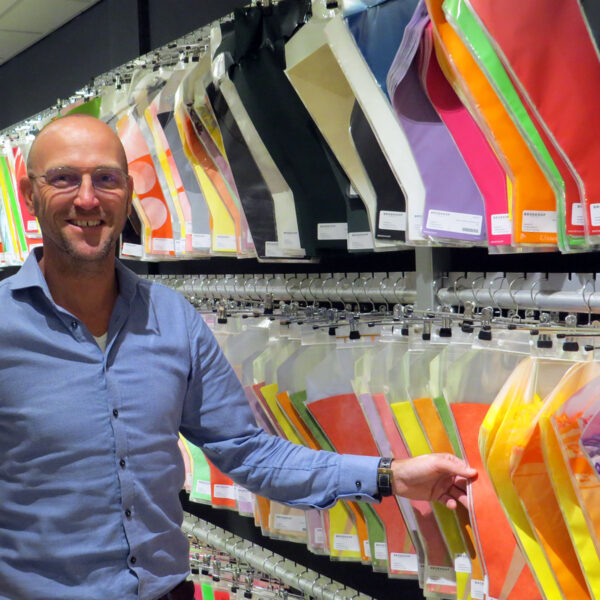
Joost Huijsmans presents his colorful line of hundreds of sustainable sleeves
A Waste of Waste
Joost is not alone in his opinion when he thinks that a lot of waste in the horti chain can be avoided or reduced a lot. An attractive printed foil or sleeve has the purpose to seduce the potential buyer. But what if the intended buyer never gets to see this plastic packaging material? That's a waste of waste. Two examples: • A lot of foils are not used for their purpose, to attract the buyer. Growers proudly put their logos on the foil, but on arrival in a wholesaler or with a bouquet company, often these foils are taken off straight away to be replaced by other foils. This happens, for instance, when bunches of ten stems are split into two bunches of five stems or when products are made into ready-bouquets. Ideally, growers should know more about their buyers and the buyers of these flowers would know upfront how these flowers will be used. This way the grower might have a chance to put the flowers in a neutral, more sustainable foil. • We are used to having flower bunches packed by growers in hard, transparent foil. Recycled plastic looks very different. It does not have this totally transparent look, it may even look a bit stained or greyish. That is because when color is added to the original transparent sleeves - like with a printed logo - it is impossible to get this same transparency again in the next life. We have to get used to this 'look' and understand that it looks 'good' because it is recycled material.Five Sustainability Florist Tips from Joost
• If available in your country, see if you can join a sustainable florist initiative. In the Netherlands, we have, for instance, Duurzame Bloemisten Group. Being a member helps you become a sustainable florist. • Make sure all flexibles you use are made of PP (Polypropylene) or PE (Polyethylene); these are better recyclable. • Only use paper that is not bleached. • Collect plastics in transparent bags, and throw it in the purposed 'pmd' or 'pbp' containers available in your township, or bring it to a recycling company. • It is no use to use partially plastic and partially paper products, simply because you can put this product neither in the plastic waste container bag nor in the paper waste bin.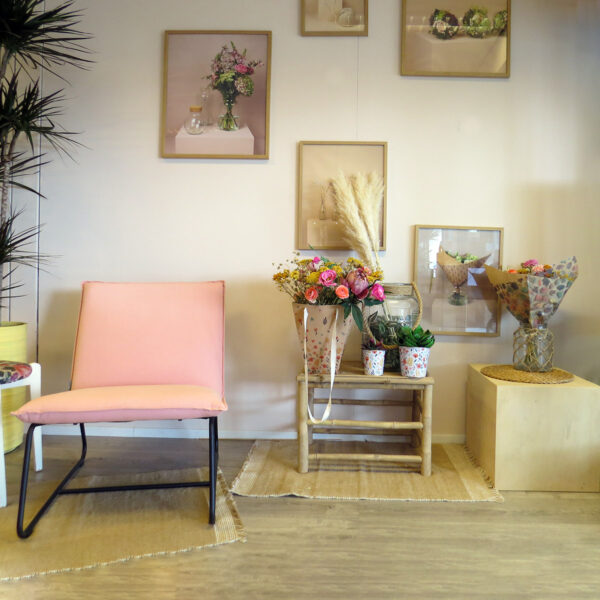
Some of Broekhof's designs in their Aalsmeer showroom
The (Near) Future
Joost Huijsmans realizes that there is no time to waste. He shines his light on the short term future:"Right now we are all in the perception phase. We use a lot of paper or paper combinations or materials that have a paperish appearance. When this 'hype' passes and people will look at the facts, I think we will move towards a circular economy."Five words are central in this future: Reduce, Re-use, Recycle, Resource, and Re-inform: • Reduce is already happening with thinner plastic sleeves without loss of functionality. • Re-use happens partially with deposit or returnable materials, but still too little. • Recycle is, like I said before, possible for all materials. It may be even better for our environment to use recyclable plastic instead of chopping trees for single-use paper. • Resource stands for looking for alternatives to existing products/materials with a lower environmental impact, such as German ceramics versus Chinese ceramics or recycled glass from Poland instead of 'virgin' glass. • Re-inform means informing the consumer in the field of waste separation by means of clearly recognizable universal logos on the packaging.
